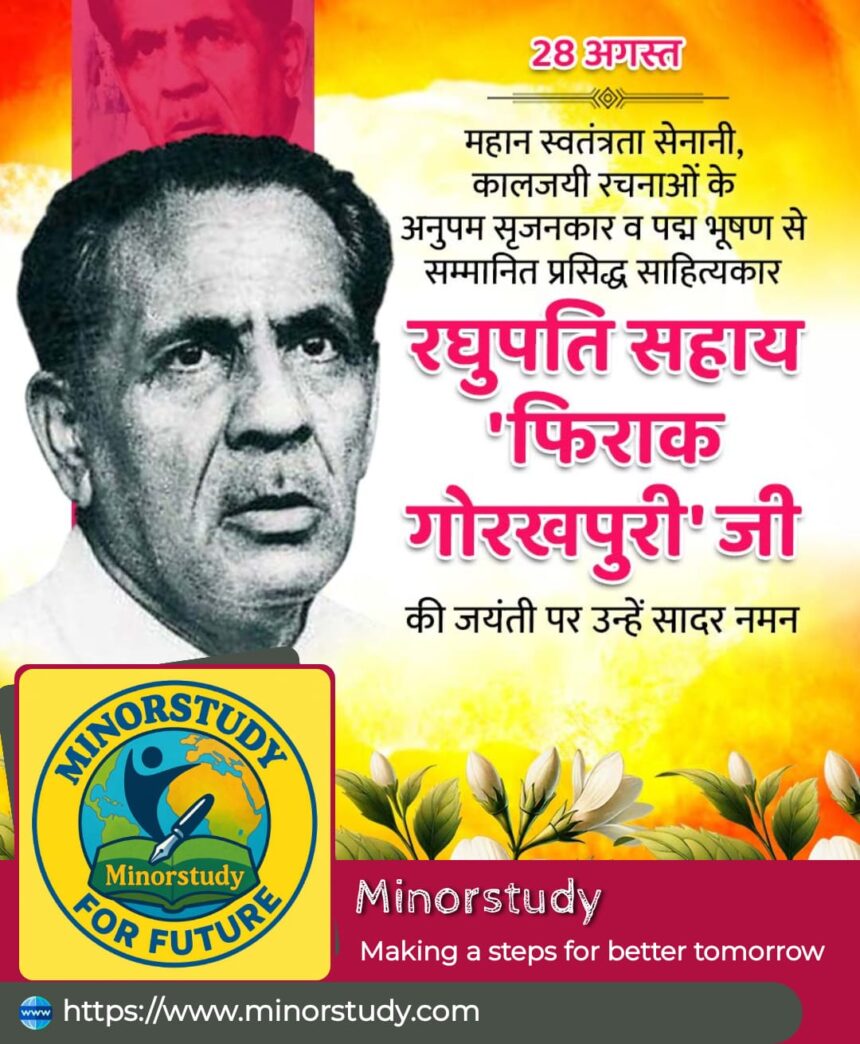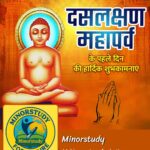Introduction
Among the towering figures of modern Indian literature, Raghupati Sahay ‘Firak Gorakhpuri’ holds a special place. A celebrated Urdu poet, academician, and literary critic, Firak’s words still resonate with lovers of poetry across India and beyond. His contribution to Urdu poetry, Indian nationalism, and social harmony has left an unforgettable mark.
- Introduction
- History of Raghupati Sahay ‘Firak Gorakhpuri’
- Timeline of Firak Gorakhpuri’s Life
- Interesting Facts About Firak Gorakhpuri
- Significance of Firak Gorakhpuri
- 1. Cultural Harmony
- 2. Modern Urdu Poetry
- 3. National Voice
- 4. Academia & Literature
- 5. Universal Appeal
- Observance and Legacy
- Daily Life Impacts of Firak Gorakhpuri’s Teachings
- Importance in Society
- Wishing Messages for Remembering Firak Gorakhpuri
- FAQs About Firak Gorakhpuri
- Conclusion: Why Firak Gorakhpuri Still Matters Today
He was not just a poet of love and beauty but also a voice of resistance, justice, and humanity. His ghazals and nazms reflected the cultural richness of India and gave Urdu literature a modern identity. In this article, we’ll explore his history, timeline, life facts, significance, legacy, FAQs, and daily life impacts—all written in a way that connects emotionally with today’s readers.
History of Raghupati Sahay ‘Firak Gorakhpuri’
Birth: He was born on 28 August 1896 in Gorakhpur, Uttar Pradesh, into a Hindu Kayastha family.
Early Life: Raised in a culturally rich environment, he developed a deep interest in languages and literature from childhood.
Education: Firak studied English literature and went on to teach at Allahabad University, where he became one of the most respected academics.
Political Involvement: He briefly joined politics during the Indian freedom movement, influenced by Mahatma Gandhi.
Literary Journey: Soon, he immersed himself in Urdu poetry, earning fame for his unique blend of romanticism, nationalism, and modern sensibilities.
Awards: His literary brilliance was recognized with the Sahitya Akademi Award (1956), the Jnanpith Award (1969), and the Padma Bhushan (1968).
Death: He passed away on 3 March 1982, leaving behind a vast treasure of poetry.
Timeline of Firak Gorakhpuri’s Life
1896 – Born in Gorakhpur, Uttar Pradesh.
1916–1920 – Higher education, influenced by nationalist movements.
1920s – Joined Indian National Congress and participated in freedom struggle.
1930s – Took up teaching at Allahabad University; became a leading literary figure.
1940s–50s – Published influential poetry collections, blending love, philosophy, and patriotism.
1956 – Won Sahitya Akademi Award.
1968 – Awarded Padma Bhushan by the Government of India.
1969 – Honored with India’s highest literary award, the Jnanpith Award.
1982 – Passed away in Allahabad, remembered as one of the greatest Urdu poets of the 20th century.
Interesting Facts About Firak Gorakhpuri
Though a Hindu by birth, he chose Urdu as his primary literary medium, breaking cultural stereotypes.
He was deeply influenced by both Western literature and Indian philosophy, creating a unique style.
His pen name “Firak” means separation or longing, which suited his poetic themes.
He was a professor of English at Allahabad University, admired for his command over multiple languages.
Firak’s poetry explored love, beauty, sorrow, nationalism, and humanity.
His works were admired by poets like Faiz Ahmed Faiz and Josh Malihabadi.
He believed poetry should reflect social responsibility and truth, not just romantic musings.
His writings created a bridge between Hindu and Muslim cultural traditions in India.
Significance of Firak Gorakhpuri
1. Cultural Harmony
Firak symbolized India’s Ganga-Jamuni tehzeeb (composite culture), proving that literature can transcend religious boundaries.
2. Modern Urdu Poetry
He gave modern themes to Urdu poetry while preserving its classical beauty.
3. National Voice
Through his works, Firak celebrated India’s freedom movement, unity, and diversity.
4. Academia & Literature
As a professor, he influenced generations of students, blending academic brilliance with poetic passion.
5. Universal Appeal
His poetry still speaks to lovers of language, truth, and justice—across religions and nations.
Observance and Legacy
Literary Tributes: Every year, literary organizations hold seminars and poetry sessions in his memory.
Universities & Libraries: Allahabad University and other institutions continue to preserve and promote his works.
Poetry Mushairas: Recitations of Firak’s ghazals remain popular in Urdu literary gatherings.
Books & Research: Scholars frequently study his works to understand the modern evolution of Urdu literature.
Daily Life Impacts of Firak Gorakhpuri’s Teachings
Romantic poetry helps readers connect with love, longing, and beauty.
Socially conscious poetry inspires us to stand against injustice.
His example encourages breaking barriers of religion, caste, and language through art.
His philosophy nurtures empathy, tolerance, and humanism in everyday life.
His success shows how literature can transform society and shape identities.
Importance in Society
He is a symbol of secularism, inspiring harmony in a divided world.
His poetry contributes to the cultural identity of modern India.
His life shows the importance of education and intellectual freedom.
Firak inspires writers and poets to express truth boldly.
He remains a guiding light for youth exploring literature as a way of life.
Wishing Messages for Remembering Firak Gorakhpuri
🌸 “On the birth anniversary of Firak Gorakhpuri, let us celebrate the poet who united hearts with his verses.”
🌸 “May the spirit of Firak’s poetry inspire us to live with love, courage, and humanity.”
🌸 “Remembering Firak Gorakhpuri, whose words still echo with truth, beauty, and wisdom.”
FAQs About Firak Gorakhpuri
Q1. Who was Raghupati Sahay ‘Firak Gorakhpuri’?
A1. He was a renowned Indian Urdu poet, professor, and literary critic, born in 1896 in Gorakhpur.
Q2. What was his contribution to literature?
A2. He modernized Urdu poetry, blending romance, nationalism, and humanism.
Q3. Which awards did he win?
A3. Sahitya Akademi Award, Padma Bhushan, and Jnanpith Award.
Q4. Why is he called a symbol of cultural harmony?
A4. As a Hindu writing in Urdu, he became a bridge between communities, showing literature has no religion.
Q5. Where did he teach?
A5. He was a professor of English at Allahabad University.
Conclusion: Why Firak Gorakhpuri Still Matters Today
The life and works of Raghupati Sahay ‘Firak Gorakhpuri’ are more than just a chapter in Urdu literature—they are a beacon of unity, courage, and love. He was not only a poet of beauty and romance but also a voice for justice, equality, and cultural harmony.
In an age where divisions threaten peace, Firak’s legacy reminds us that poetry has the power to unite hearts and heal societies. His story teaches us that true greatness lies in breaking barriers, embracing diversity, and standing firm with truth.
Today, Firak Gorakhpuri lives on not just in books but in every reader who finds comfort, courage, and compassion in his poetry. Truly, he remains an immortal soul in the world of literature and humanity.









I have been absent for some time, but now I remember why I used to love this site. Thank you, I¦ll try and check back more often. How frequently you update your web site?